13th October 2024
Glade Creation and Management
A keen gang of our regular volunteers turned out on a lovely autumn morning to help with the clearance and establishment of one of the glades at Hollym Carrs Nature Reserve.
Use of the Society’s electric chainsaw made swift work of felling some trees that had begun to shade out the glade area (originally included in the planting plan back in the 90s). Bow saws and loppers did the rest of the work.
After a few hours hard but enjoyable work we had opened a substantial space and let in the sunlight. The glades are important for woodland insects and birds as they act as sun traps and encourage flowering plants to thrive. This also changes the age profile of the woodland as some of the trees felled will come back as coppice and provide a different habitat. Sadly, not many of the ash trees will return as they have been killed by the dreaded ‘Ash-dieback’.
The brash made was laid out to form a dead hedge. A further habitat for small mammals, birds and insects. Nothing is wasted here. As the wood rots down, it will add nutrients to the maturing woodland too.
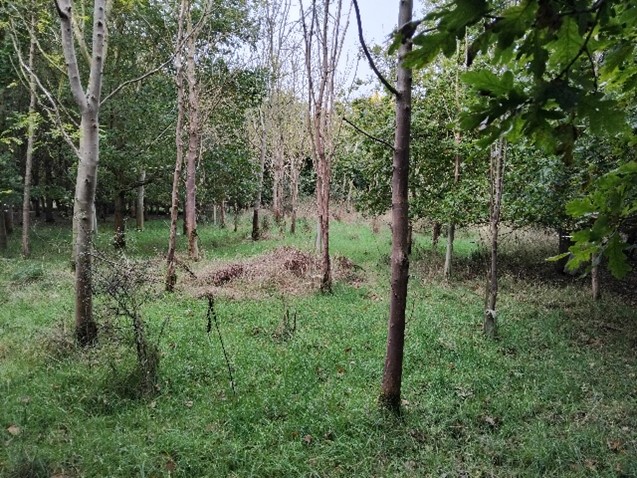
Figure 1Before
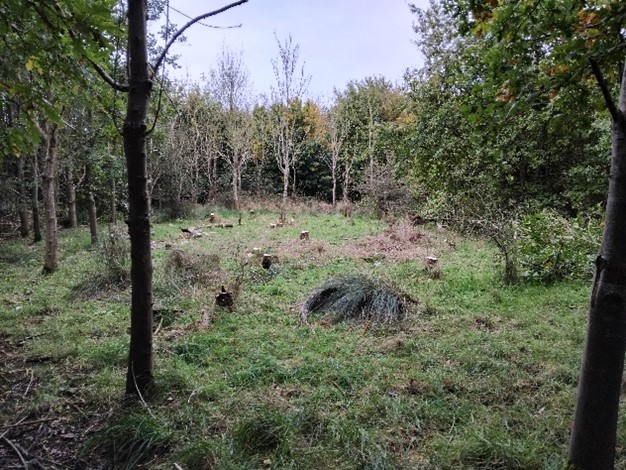
Figure 2 After
Our next task will be on November 10th and we hope to be clearing more glades and coppicing some willow. We will also begin the construction of a viewing screen using the timber from the site.
Andy Mason
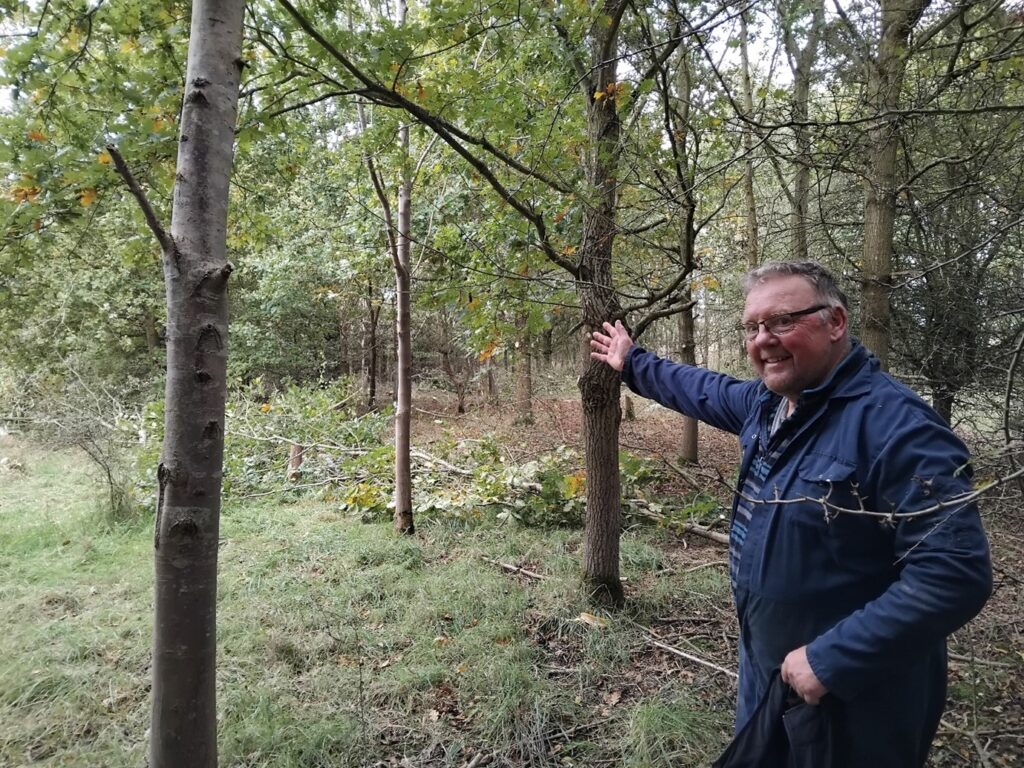
Charlie is happy with the open glade!
29th September 2024
Homes for the future
Task number one of the new practical work season. 22nd September at Ivy House and Toffling Hill cleaning nest boxes.
Homes for nesting birds that is. It was a murky start to the day with a chance of rain, but four volunteers came along to help with cleaning, renovating and recording current nest boxes in addition to putting up some new ones.
It can be a fiddly job. We soon found that the weather and rust had made things twice as difficult. Six of the boxes had been used at Ivy House so a 50% success rate isn’t bad. Mostly Blue and Great Tits with a Blackbird and/or Robin too.
We put up a new Tawny Owl box and six more smaller nest boxes to make up for those that have been rotted away. Paul and Jon also did some clearing of vegetation.
Charlie and I went over to Toffling Hill to put up a new Barn Owl box too. It was a challenge as the box was very well made and heavy. All health and safety procedures were followed. Five nest boxes were cleaned, and it looked like they had all been used.
The overall success has been 11 out of 17 boxes used. All cleaned and another 8 boxes put up ready for next spring. We will have a nest box making day in 2025, but those boxes will not be used until 2026 at the earliest. The best time to put up a nest box is yesterday.
Our next task will be on October 13th. We will be creating rides and glades at Hollym Carrs Nature Reserve. Meet at Ivy House for 10am. Bring stout footwear, gloves and a pack-up. As the reserve matures, we need to open up areas designated for glades as this is essential for insects and flowering plants.
Andy Mason
8th September 2024
Have you visited Hedon Museum yet? Our display will be there for everyone to view free of charge until 5th October. With Hedon Heritage weekend coming up soon it’s well worth including the museum in your visit!
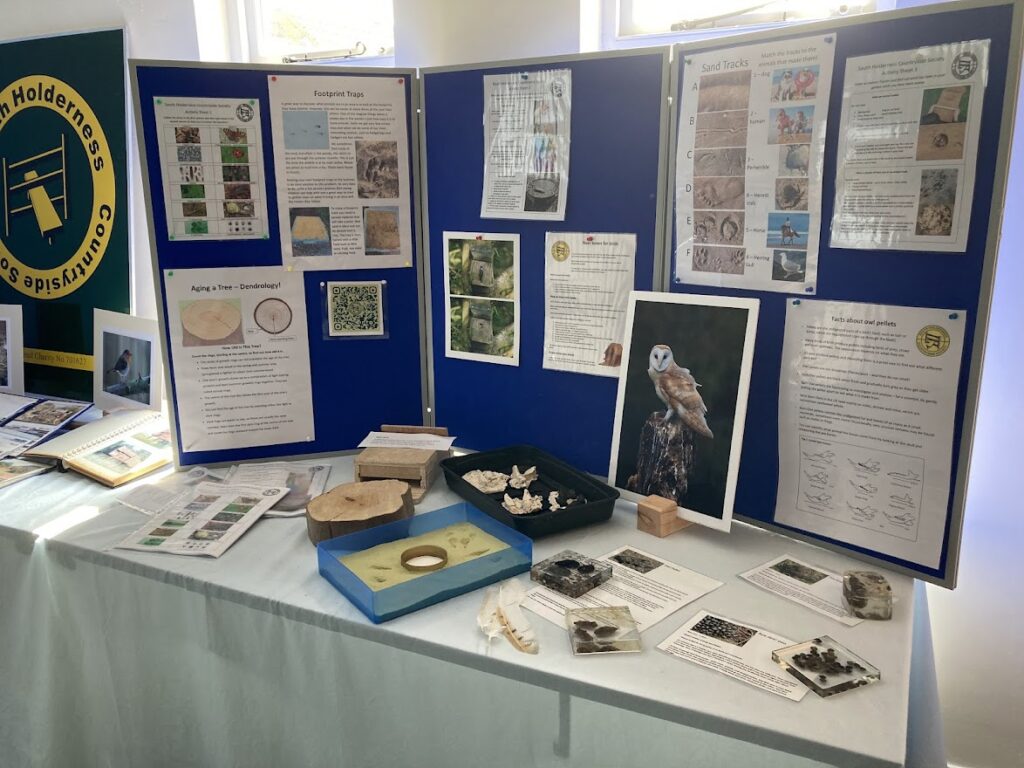
30th July 2024
HOLLYM CARRS NATURE RESERVE – BURNHAM MEADOW
SUMMARY OF CONDITION REPORT FOLLOWING SURVEY ON 22 JULY 2024
Under the terms of the Stewardship agreement (AG00589791 version 9.0) we should assess ‘Indicators of Success’ at Year 5. This was done at Year 5 and we are now at Year 10, progressing into a 5-yr extension. Although not specified as being required now, we would not be able to assess success (or otherwise) over this next 5 years without a Condition Survey this year.
Method
A formal survey technique (quadrat or linear transect) was considered excessive given the habitat homogeneity established in previous years and the specification of Indicators. Instead, a ‘W’ or zigzag walkover was made recording all species noted in a 3 metre wide swath together with an estimate of their frequency on the DAFOR* scale, qualified to Local distributions, where appropriate.
*[Dominant, Abundant, Frequent, Occasional or Rare where Rare = fewer than 6 plants seen on the whole walkover].
Results
Table 1: Species list (Genus,Species,Common,Frequency)
| Achillea | millefolium | Yarrow | R |
| Achillea | ptarmica | Sneezewort | LF |
| Agrostis | canina sensu lato | Brown Bent | LF |
| Agrostis | capillaris | Common Bent | F |
| Agrostis | gigantea | Black Bent | O |
| Agrostis | stolonifera | Creeping Bent | R |
| Alopecurus | pratensis | Meadow Foxtail | F |
| Anthoxanthum | odoratum | Sweet Vernal Grass | A |
| Arrhenatherum | elatius | False Oat-grass | R |
| Carex | flacca | Glaucous Sedge | O |
| Centaurea | nigra | Black Knapweed | R |
| Cerastium | fontanum | Common Mouse-ear | R |
| Cirsium | arvense | Creeping Thistle | R |
| Dactylis | glomerata | Cock’s-foot | R |
| Filipendula | ulmaria | Meadowsweet | R |
| Geranium | dissectum | Cut-leaved Crane’s-bill | R |
| Heracleum | sphondylium | Hogweed | R |
| Holcus | lanatus | Yorkshire-fog | D |
| Juncus | conglomeratus | Compact Rush | O |
| Juncus | effusus | Soft-rush | O |
| Lathyrus | pratensis | Meadow Vetchling | R |
| Lolium | perenne | Perennial Rye-grass | R |
| Lotus | corniculatus | Bird’s-foot-trefoil | R |
| Luzula | campestris | Field Wood-rush | R |
| Medicago | lupulina | Black Medick | R |
| Persicaria | amphibia | Amphibious Bistort | LF |
| Phalaris | arundinacea | Reed Canary-grass | O |
| Phleum | pratense | Timothy | O |
| Phragmites | australis | Common Reed | LF |
| Plantago | major subsp. major | Greater Plantain | F |
| Poa | pratensis | Smooth Meadow-grass | R |
| Potentilla | anserina | Silverweed | R |
| Potentilla | erecta subsp. erecta | Tormentil | O |
| Potentilla | reptans | Creeping Cinquefoil | R |
| Ranunculus | acris | Meadow Buttercup | R |
| Ranunculus | repens | Creeping Buttercup | F |
| Rhinanthus | minor | Yellow Rattle | LF |
| Rumex | acetosa | Common Sorrel | R |
| Rumex | conglomeratus | Clustered Dock | R |
| Rumex | crispus | Curled Dock | R |
| Rumex | obtusifolius | Broad-leaved Dock | R |
| Silaum | silaus | Pepper-saxifrage | LO |
| Sonchus | oleraceus | Smooth Sow-thistle | R |
| Stellaria | graminea | Lesser Stitchwort | LO |
| Trifolium | dubium | Lesser Trefoil | R |
| Trifolium | pratense | Red Clover | R |
| Trifolium | repens | White Clover | R |
| Vicia | cracca | Tufted Vetch | O |
| Vicia | sativa subsp. segetalis | Common Vetch | R |
Species marked in Red are noteworthy. Taxa are not recorded in current taxonomy to assist comparison.
49 Species; Cuckoo-flower Cardamine pratensis and Hairy Sedge Carex hirsuta were not located but are unlikely to have been lost. Total: 51 species.
Indicators of success
Indicator 1: Soil Phosphate Index should be zero or 2.
Soil Phosphate level has never been measured. There have not been any NPK inputs since before 1988 and the absence of coarse herbs (nettle, dock and thistle) indicates that P levels are very low or absent.
Indicator 2: There should be 2 high value indicators that are Frequent and 2 that are Occasional.
See Table: This Indicator was achieved before the Agreement was made. Overall floral diversity has increased by the addition/increase of Yellow Rattle (which has lowered grass dominance through hemiparasitism), Selfheal and Lesser Stitchwort. Cuckoo-flower and Hairy Sedge were not seen on this survey but were present in 2023.
Indicator 3: Cover of species indicating water logging (rushes, Common reed, Reed Canary-grass) should cover less than 20%.
Estimated <10%. These negative factors were put at risk of increase by the adjacent landowner cleaning the ditch and dropping risings onto the margin of the meadow on the South West side. Common reed succumbed to the meadow mowing regime (>July 15) on both sides of the meadow, and removal of the fence has enabled mowing closer to the source of incursion of the North East side.
Indicator 4: Cover of wildflowers (excluding undesirable species) including rushes and sedges should be between 20% and 90%, 40% of which should flower during May-June.
This is mainly true although highly variable on a local basis. Damp central areas are particularly floristically rich. Sneezewort, Yellow-rattle, Yellow Vetchling, Cuckoo-flower and both species of buttercup are usually in bloom during June with the first three still showing bloom at the time of hay cut after 15 July.
Indicator 5: Cover of bare ground should be between 1% and 5%,
Cover of bare ground is less than 1% however, mole hills are increasingly abundant and may pose negative factors in the future.
Conclusion
The meadow management regime is maintaining established indicators of success. The spread of Yellow Rattle is depleting grass yield but increasing floral diversity.
Surveyed and reported by:
Peter J Cook
Emeritus Recorder, Botanical Society of Britain and Ireland
21st July 2024
The weather was kind to us and we had a small but dedicated group that turned out for the Open Day. We had refreshed all of our displays, getting ready for Hedon Museum next month, and given everywhere a good tidy and clean.
Whilst some decided to stay at Ivy House for a catch up and a cuppa a group walked down to Hollym Carrs Nature Reserve for a recording trip.
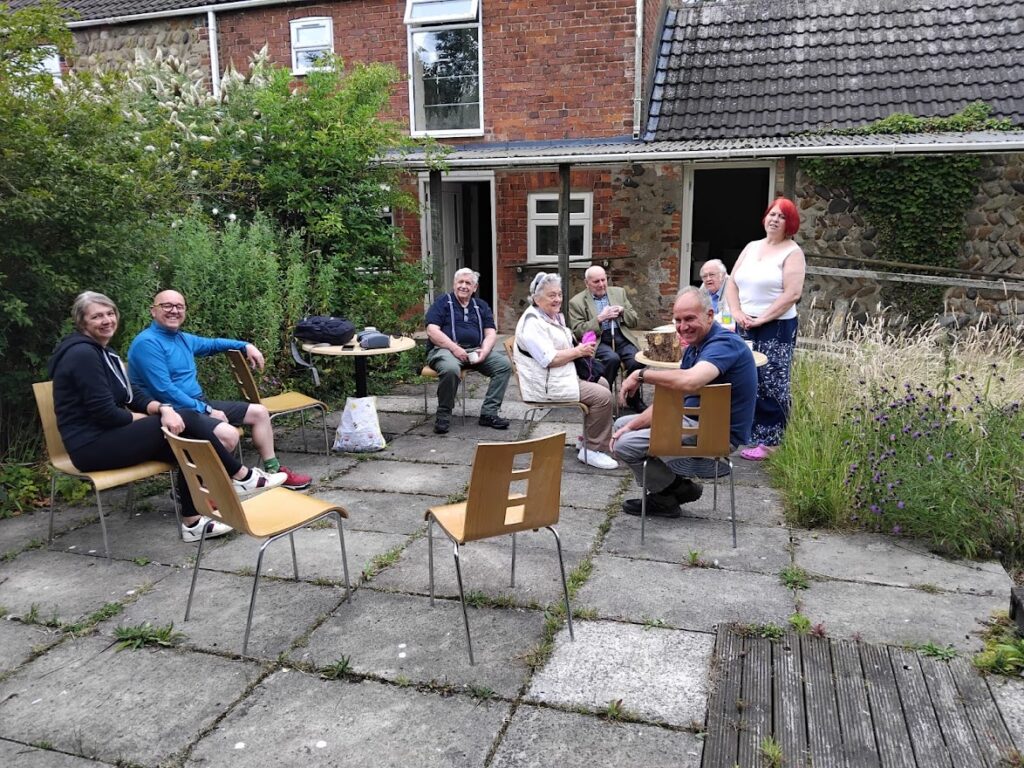
- A Visit to Hollym Carrs Nature Reserve
25th May
My main visit today to H C N R was to take castings of animal footprints and set up the camera trap.
I drove into the reserve and sorted my gear and off I went to find some tracks; I soon found an area with some and took a couple of castings.
This is the first time I have taken castings, so it was a learning curve for me, the first ones were done with a watery mixture but turned out ok.
I then went to have a look round the newt pond and found some good tracks at the water’s edge, so I mixed some more plaster, this time of a little thicker consistency. Whilst these casts where setting I went to set up the trail camera overlooking the pond nearest Burnham Meadow.

Anyway the casts seemed to dry in what seemed like no time at all so I collected them up carefully in a bag.
I decided to have a good wander around the reserve and took a few photos with my phone.
My binoculars are always with me so I was able to see the following—Robin, Magpie, Buzzard overhead, Little Egret overhead, Kestrel on one of the owl boxes in Burnham Meadow, Great tit, Blue tit, Blackbird, Pheasant, Wood Pigeon, Sparrowhawk, Reed bunting, Linnet, Whitethroat, Wren, plenty of Swifts, Mallard overhead. And in the field nr the reserve I saw a group of Greylag Geese about eight and in among them a single Barnacle Goose. In the same field I saw Deer and Hares.
When I got home, I cleaned up the castings and I was pleased at the results.

Charlie.
- Task day Blog
On Sunday 19th May Andy and I embarked on another task at Hollym Carrs Nature Reserve. We gathered the relevant gear we needed and first aid box from Ivy house then headed to the reserve.
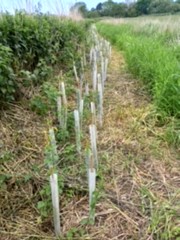
For a change we were lucky with the weather and we managed to get onto the reserve with the car and set up for the task. The job today was to clear unwanted weed growth around the trees we had previously planted as a hedge line in Burnham Meadow.
The main piece of equipment we used was the battery-operated strimmer with the blade attachment; Andy used it first using the appropriate safety gear and cut in between the trees making sure not to get too close. I followed from a safe distance with a sickle to cut any weeds growing closer to the trees. We reversed roles later on.
Andy spotted a grass snake when he was weeding between the trees which was a great thrill.
We also cut a path through from Burnham Meadow to the bench near Smess before the battery ran out, again taking it in turns, while one was cutting the path the other cut back any overhanging branches with loppers.
Whilst we were having a break for lunch Andy and I enjoyed watching the birds and listening to their songs.
The next task day is on 16th June at Ivy House maintaining the grounds.
Charlie.
